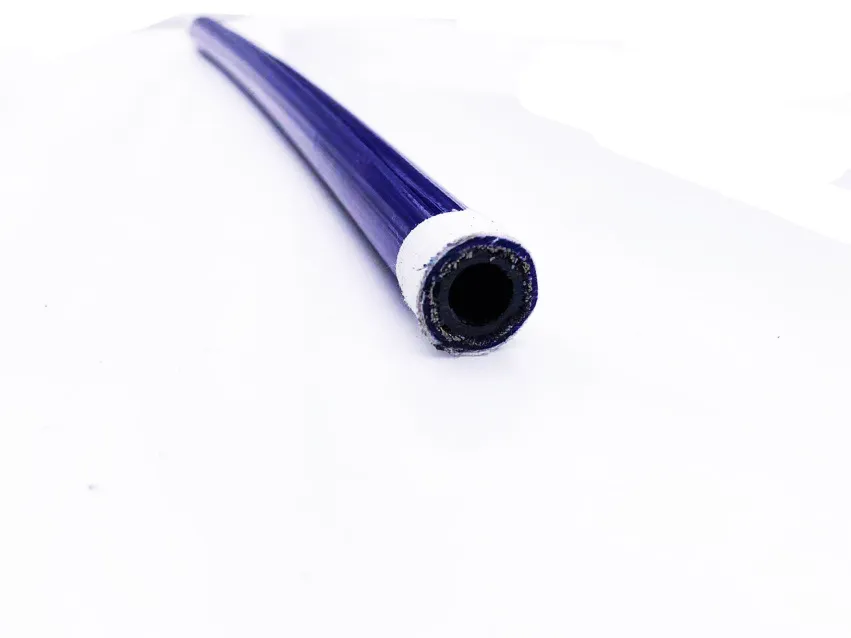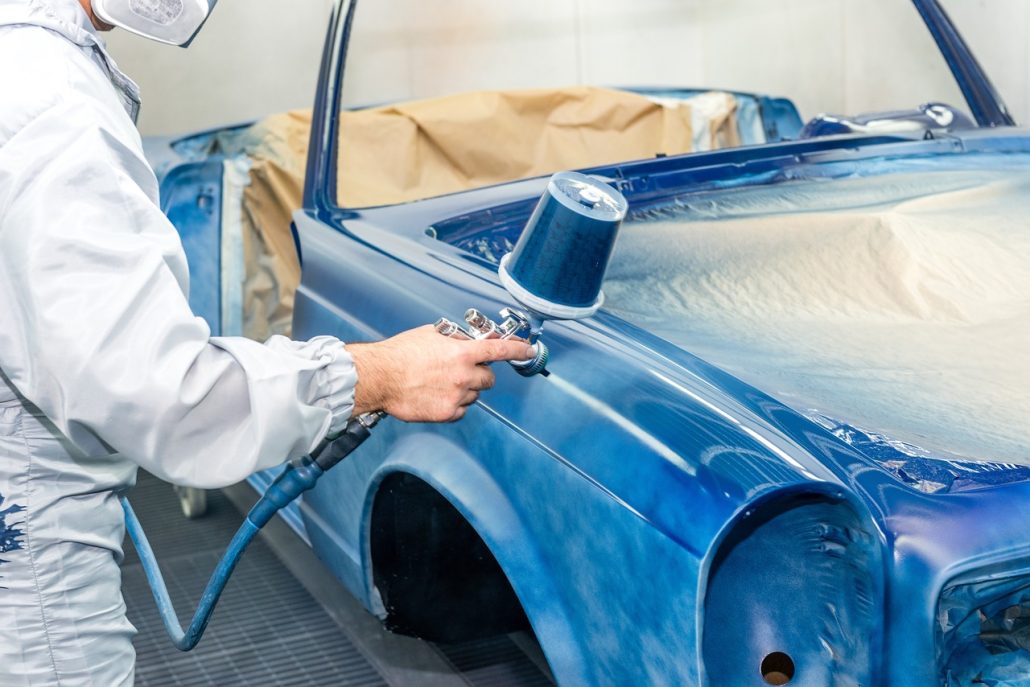Manual painting is often troublesome and tiring. Also, it takes a lot of time to finish. However, spray painting makes this job faster and easier. When you think of spray painting, you still have some options. Each of these options needs a unique sprayer and hose. In this article, we will mainly talk about an airless paint spray hose.
There are many manufacturers out there. But how do you know which hose is high quality and which might suit your project? If we are in the same boat, this article will significantly help you. It gives you some technical knowledge and tips. After reading this article, you will learn how to choose the best quality. Let’s dig in.

What is an Airless paint spray hose?
An airless paint sprayer hose is a specialized tube or pipe that carries paint or coating. An airless sprayer usually connects it to the spray gun. These hoses are meant to handle high pressure and ensure consistent painting.
You might wonder why these hoses are called “airless.” To understand, you should know how a paint sprayer works. A paint sprayer atomizes the paint into tiny droplets, using or without air. Air sprayers use compressed air to mix and spray paint. On the other hand, airless sprayers rely on high pressure to force paint through a nozzle. The difference between airless paint spray hoses and regular hoses is as follows.
(1) An airless sprayer hose is designed to handle much higher pressure than regular hoses.
(2) It is much more durable and typically reinforced to withstand intense force.
(3) An airless paint hose is more flexible. You can quickly move it and control it during painting.
(4) This sprayer hose has a smooth inner lining. As a result, the paints usually do not clog inside, allowing for a consistent result.
How to Choose the Right Airless Paint Spray Hose?
Choosing the right airless paint sprayer is crucial for many reasons, including ensuring a smooth and efficient job. Therefore, always match the hose to your sprayer’s pressure, flow rate, and project size. For high-pressure systems, try to use durable, reinforced hoses. For tight spaces, opt for more flexible hoses.
If you fail to select the correct hose, you may experience serious issues. An undersized airless spray gun hose may burst under pressure. Overlaying long hoses can reduce pressure, causing uneven painting. Also, a poor-quality hose might wear out quickly or clog. Therefore, always check the compatibility.
When selecting an airless paint spray hose, consider the following factors. By considering them, you can reduce high repair costs.

Factor #1 Project Requirements
Project demand plays a big role when you choose the proper airless paint sprayer hose. Therefore, you must first know the needs of your tasks. And finally, you can evaluate all those needs to find the best hose that ensures the most effective results.
Rate of Coating
The coating rate means the amount of paint sprayed at a specific time. This rate depends on the pressure and flow rate of your sprayer pump. High-flow pumps usually deliver high-pressure spray. So, you will need a high-pressure airless paint spray hose for these pumps. On the other hand, smaller projects don’t need high flow rates. In these situations, a standard airless spray hose is sufficient.
Pressure Requirements
The pressure your pump generates determines the hose type you need. High-pressure sprayers need heavy-duty hoses. A reinforced airless paint spray hose is usually used for such sprayers. Therefore, always check the hose’s max pressure rating. Before purchasing it, ensure the paint spray hose is compatible with the pump.

Size Requirements
The size of the hose always matters when painting using an airless paint sprayer. In general, this size requirement depends on the type of application. For instance, you will need more flexible hoses for intricate surfaces. A shorter hose may be a better choice because it allows you excellent control.
On the other hand, large-scale painting requires longer paint hoses. Most of these applications are in outdoor spaces, such as walls and extensive surface cleaning. A longer hose can give you better reach and allow you to move your sprayer more frequently.
Factor #2 Powering Equipment
The right type of airless paint spray hose typically depends primarily on the kind of power device you are using. Different types of pumps may be driven by air, electricity, or gas. Before you decide on the proper airless paint spray hose, you must determine which pump you use.
Air powered Device
These things work on compressed air, as the name suggests. Because of this, you will need tubes that are made to handle high-pressure air. Most of the time, these lines are very light and bendy. However, airless paint spray hoses usually have reinforced construction. As a result, they are strong and can offer a longer lifespan.
Electric Powered Device
Electric airless sprayers, on the other hand, are versatile. These hoses are often used for home projects. They are ideal for works that need medium, high-pressure applications. A standard airless paint spray hose comes with 25 to 50 ft longs. Therefore, these hoses offer you a perfect balance between reach and pressure consistency.
Gas Powered Device
Airless sprayers that run on gas are great for heavy-duty tools. These tools are usually used for large-area jobs. They need thick and strong tubes to handle the pump’s strong force. Most longer lines are 50 to 100 feet long.
Factor #3 Spraying Materials
Next, you must consider the paint you will use in your application. The type of paint plays a crucial role in determining the correct airless paint spray hose. Different paints or coatings require hoses with other properties and viscosities.
Latex Paints
Latex is a standard water-based paint. It is usually applied to walls and ceilings. It is relatively thick and needs a high-pressure and durable hose. For these paints, ensure you have a hose with an excellent inner lining. Polyurethane or nylon hoses work best for these paints.
Oil-based Paints
Oil-based paints are usually suitable for furniture, trim, and outdoor surfaces. They are less viscous but can be corrosive. Therefore, it’s better to choose a hose with a chemical-resistant lining. Teflon or synthetic rubber works best in this case.
Stains and Lacquers
Stains and lacquers are thinner and used for wood surfaces. People typically use a flexible hose with a smooth inner lining for precise applications. Hoses with lower pressure ratings often work well for these materials.
Primers
Primers are thicker and can clog standard hoses. For spraying primers, choose a reinforced, high-pressure hose with a wide diameter. This ensures consistent flow and reduces blockage risk.
Specialty Coatings
Materials like epoxy enamel or elastomeric coatings are heavy-duty and abrasive. For these coatings, you will need high-pressure and chemical-resistant hoses. Also, try to ensure you have chosen reinforced steel-braided hoses.
Operating Environment
Your work environment affects the type of airless paint spray hose you need. Strong hoses are often required for outdoor work. Some rough areas, UV rays, and changes in the weather can’t hurt these lines.
Lighter, more flexible lines are better for jobs inside. They make it easy to move around in small areas. If you’re working in places with a lot of wetness or great heat, pick lines made of materials that can withstand these circumstances. Using the wrong hose in a tough climate could crack, leak, or last less time.
Portability
Portability is very important for projects that cover a lot of ground. If you choose a light, airless paint spray hose, you can quickly move it around and easily store and handle it when necessary.
Longer airless paint hoses give you more reach for bigger jobs. They can be heavy, though, and harder to handle. If you want both flexibility and reach, you need extrusion pipes, or you can connect several hoses. If you pick heavy hoses, it won’t make your job easy. Instead, it costs labor and time.
Number of spray guns
The number of spray guns you use affects the hose type and length. If you use more than one spray gun simultaneously, you need lines that can handle the pressure and flow of all of them. Splitters, also called valves, let you connect more than one hose to a single pump.
When only one gun is being used, shorter lines are usually enough. If you have more than one gun, you might need longer hoses to make sure that each gun can reach you.
Summary
Let’s wrap everything up! An airless paint spray hose is widely used for painting. Unlike regular paint hoses, these airless sprayer hoses are ideal for high-pressure pumps. They are also more durable and flexible. Moreover, if you cut an airless paint sprayer hose, you will find a smooth inner lining that prevents clogging.
So, when you choose a paint hose, several factors come up. You must carefully assess what kind of hoses are best for your project. That’s what we have discussed in today’s article. However, if you still need professional advice, please contact us.
